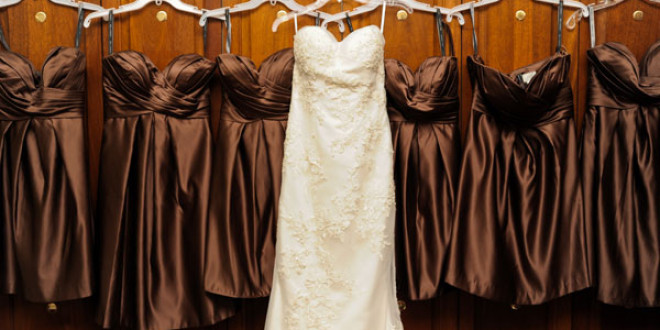[ad_1]
Today's wedding accessories are the final touches that add the aesthetic appeal that the bride has been dreaming of for her big day. This was not always the case. Most brides and wedding planners will focus on the design, price, and overall appearance of their wedding accessories, but examining the history can shed light on why veils and garters are present in the modern wedding.
Every bride past, present, and future wants to be pure and clean on their wedding day. Today it is not tradition to bathe before walking down the aisle; it is regular routine to practice good hygiene. However, historically bathing was not a common practice. The brides of ancient times did not want to expose their unclean hair, and compensated by placing a pure and clean veil on top of their heads. Yet this was not the only reason for the head garment. For some reason, evil spirits and goblins were believed to gather at weddings, and the veil was the only defense to confuse them. They were also used to hide from the bride's husband-to-be. Since "cold feet" is not a modern development regarding weddings, the bride would wear a veil to shield her face in the slim chance that the groom would suddenly find her not attractive enough to marry. Finally, this practice transformed into the superstition that is still in practice today. The "bad luck" that stems from the groom seeing the bride before the ceremony is thought to be completely averted if her face is covered by a beautiful veil.
Most traditional brides will be concealing a garter underneath their wedding dress, but hopefully not practicing the tradition in full. Back in the Dark Ages when the custom was originated, it was common for family and friends to accompany the newlyweds to their marriage bed. After the guests had all witnessed the couple established and satisfied, which was assured by the removal of the garter, they left them to continue in privacy. Like many traditions and customs, the removal of the garter morphed over the years. First it became a game to see who could physically remove it from the bride, which often ended inappropriately. Then the game had the goal of hanging it off the groom's nose, which had a potential painful end. Its transformation ended with the throwing of the garter to be worn by the next bride-to-be, a modest and painless tradition.
Other wedding accessories have survived through the ages basically unaltered. Jewelery and tiaras signify the bride as a princess, gloves keep the bride clean and covered, and the white dress is a symbol of purity and newness as she begins her new life. The histories of the veil and garter have undergone many changes, and may continue to do so, but take it as an example. Changes and differences occur over time, in both weddings and the interviews to follow, but the essence still stands tall, just as the love will not falter in a marriage that is meant to be.
[ad_2]
Source by David Keffen

